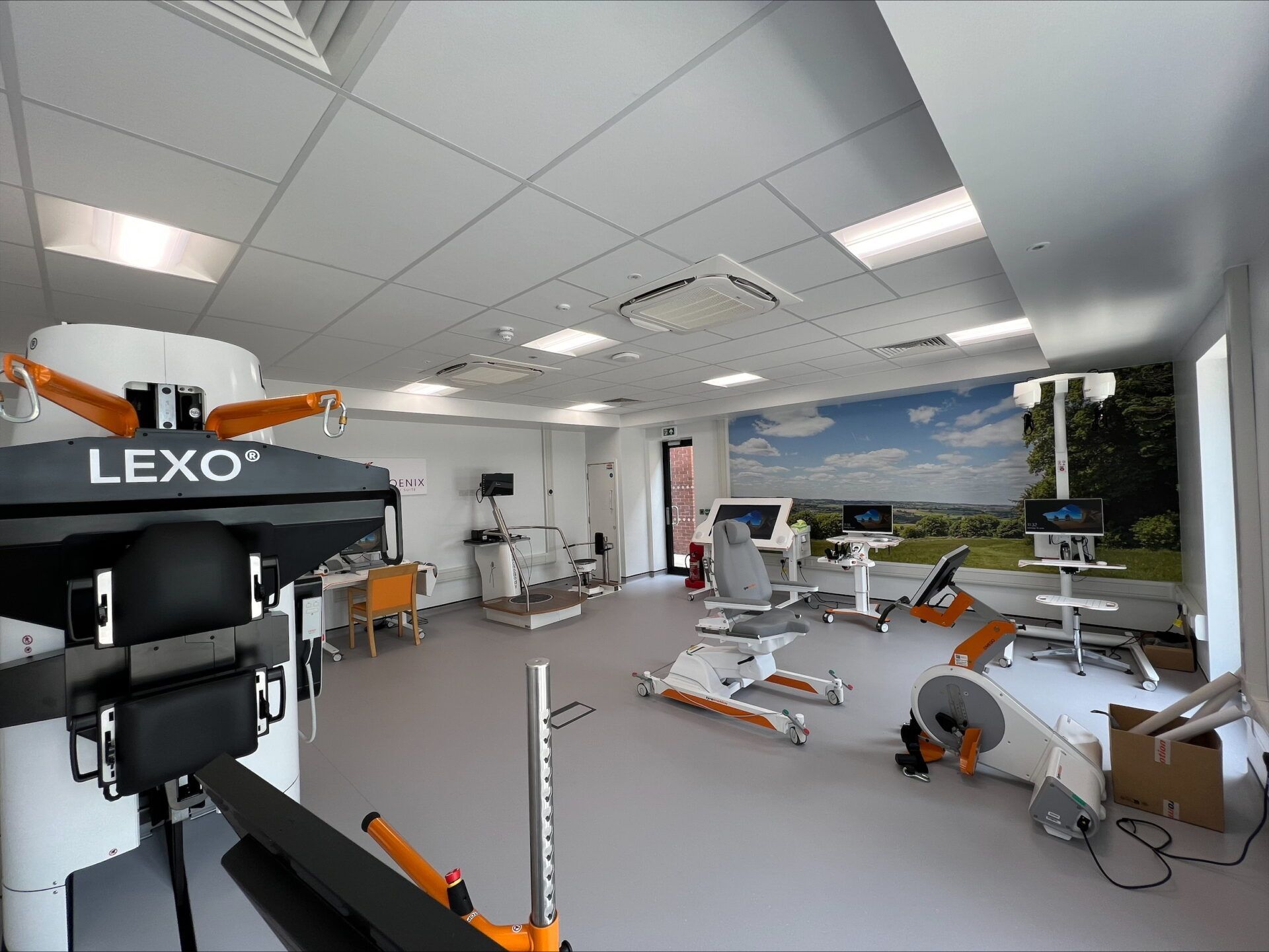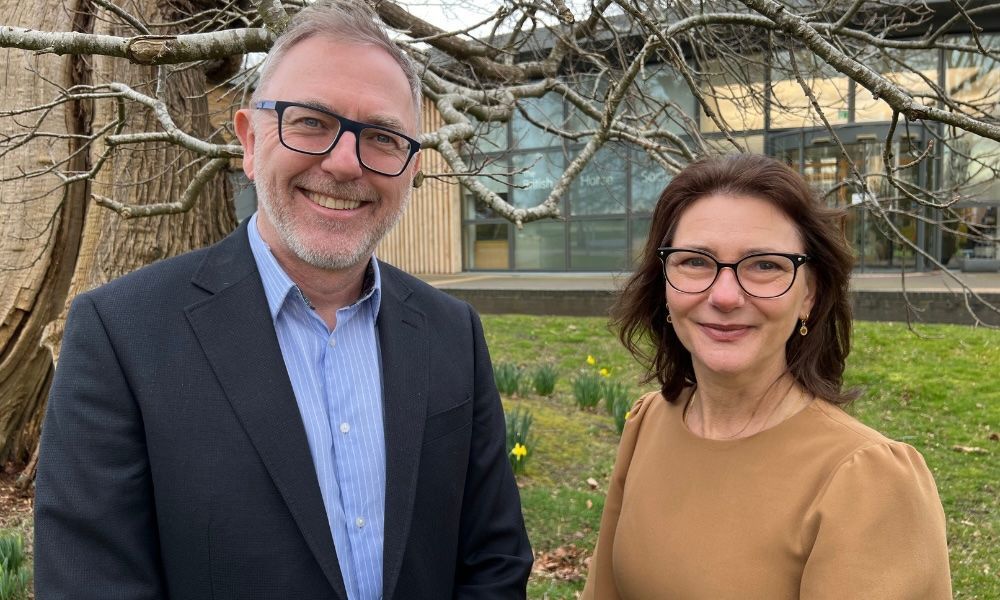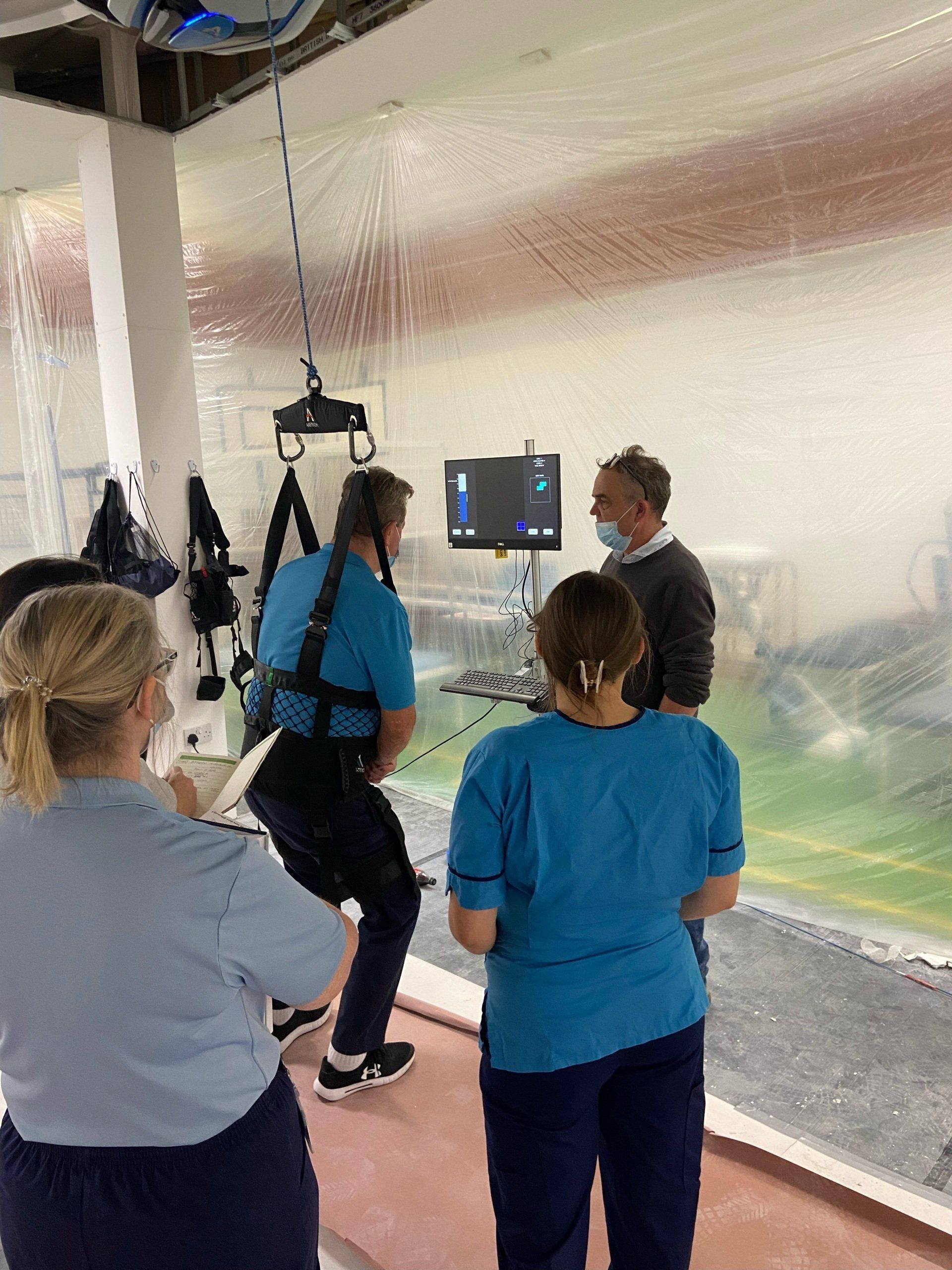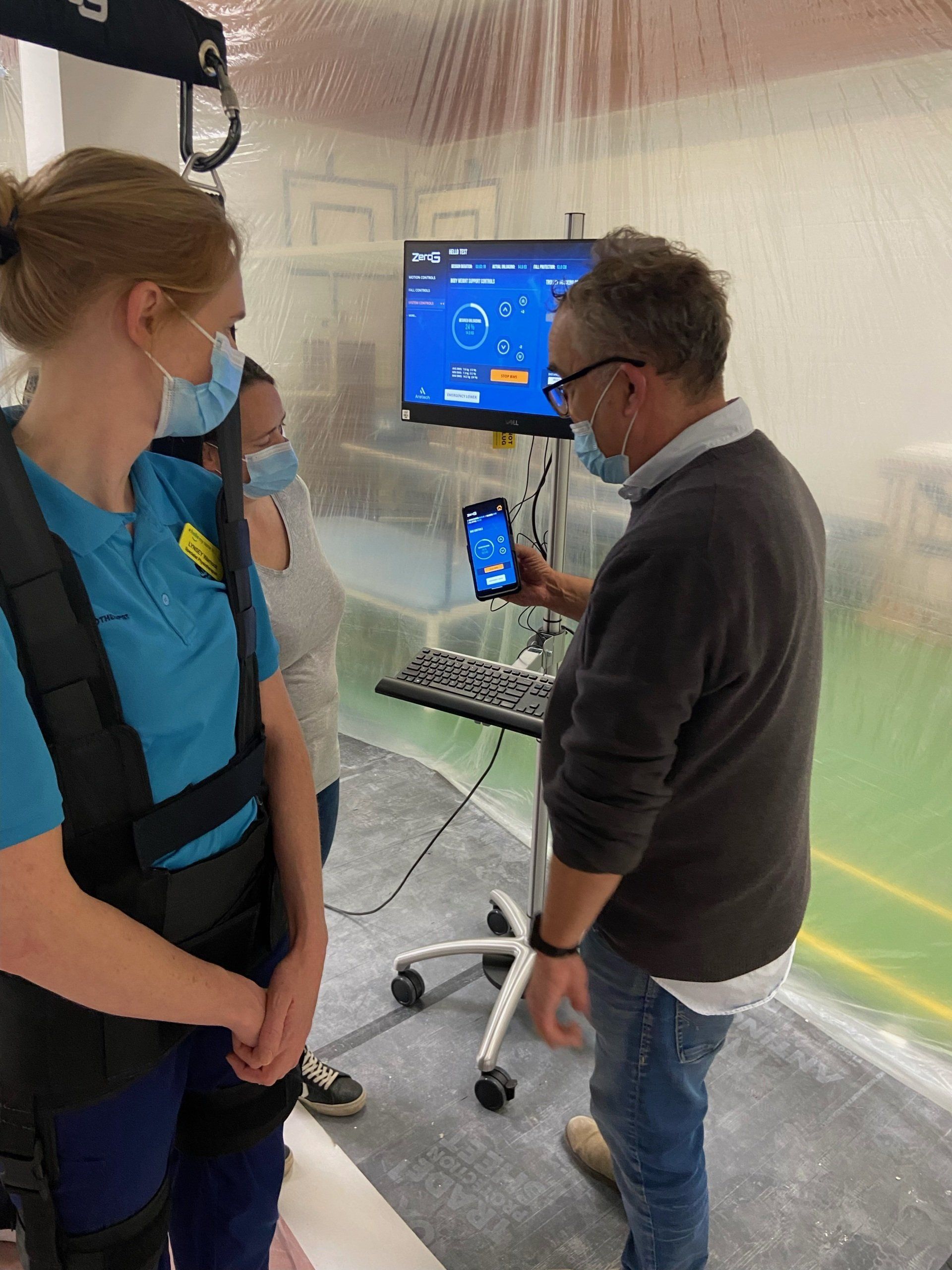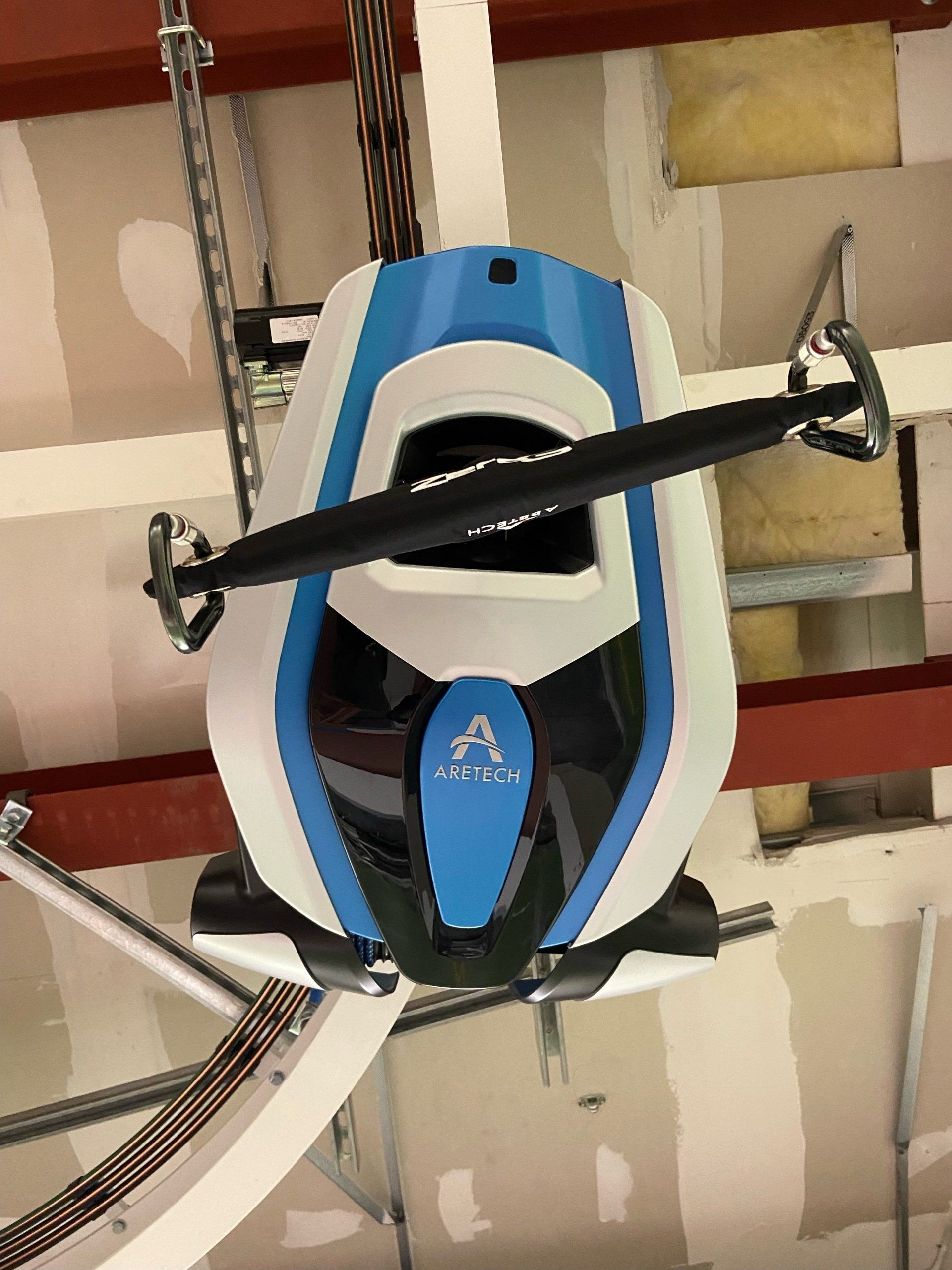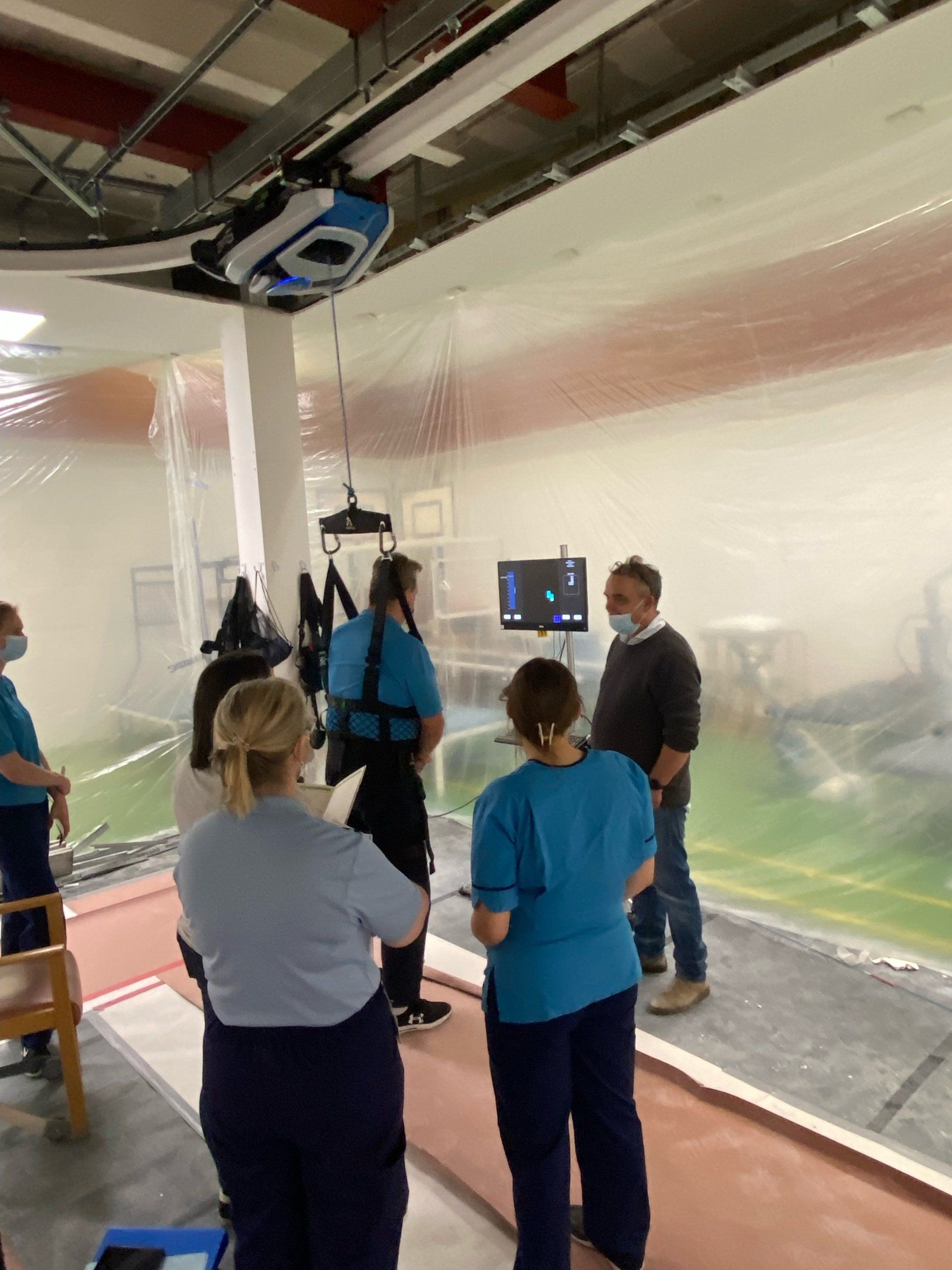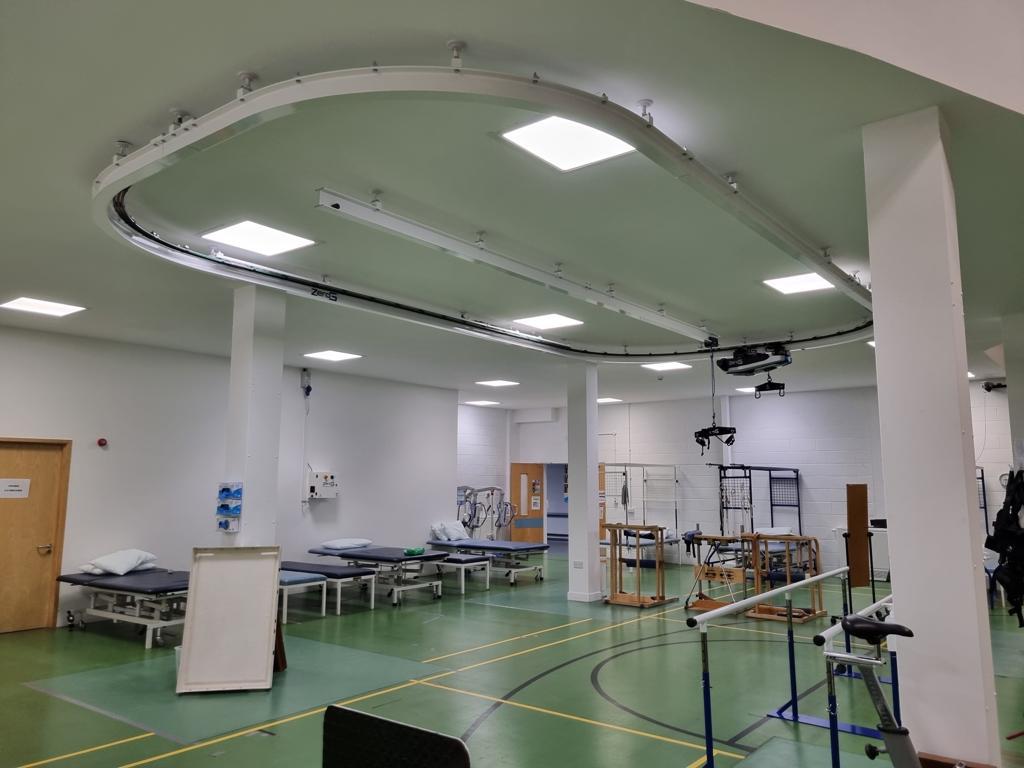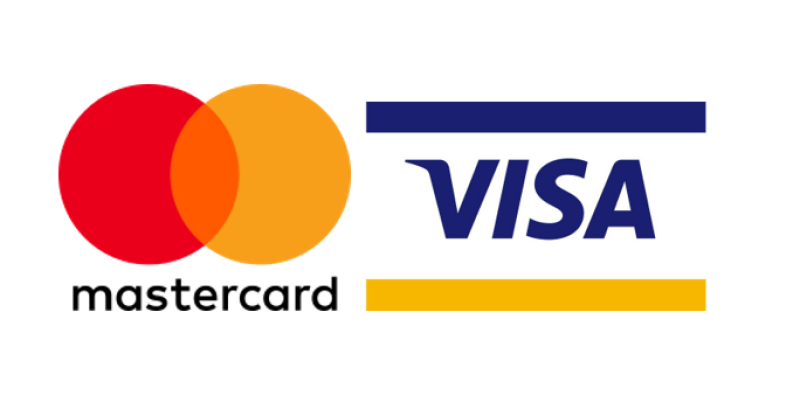First pictures of the new Zero G installation at the National Spinal Injuries Unit, Glasgow
ZeroG Gait and Balance System - installed at the Queen Elizabeth National Spinal Injuries Unit in Glasgow.
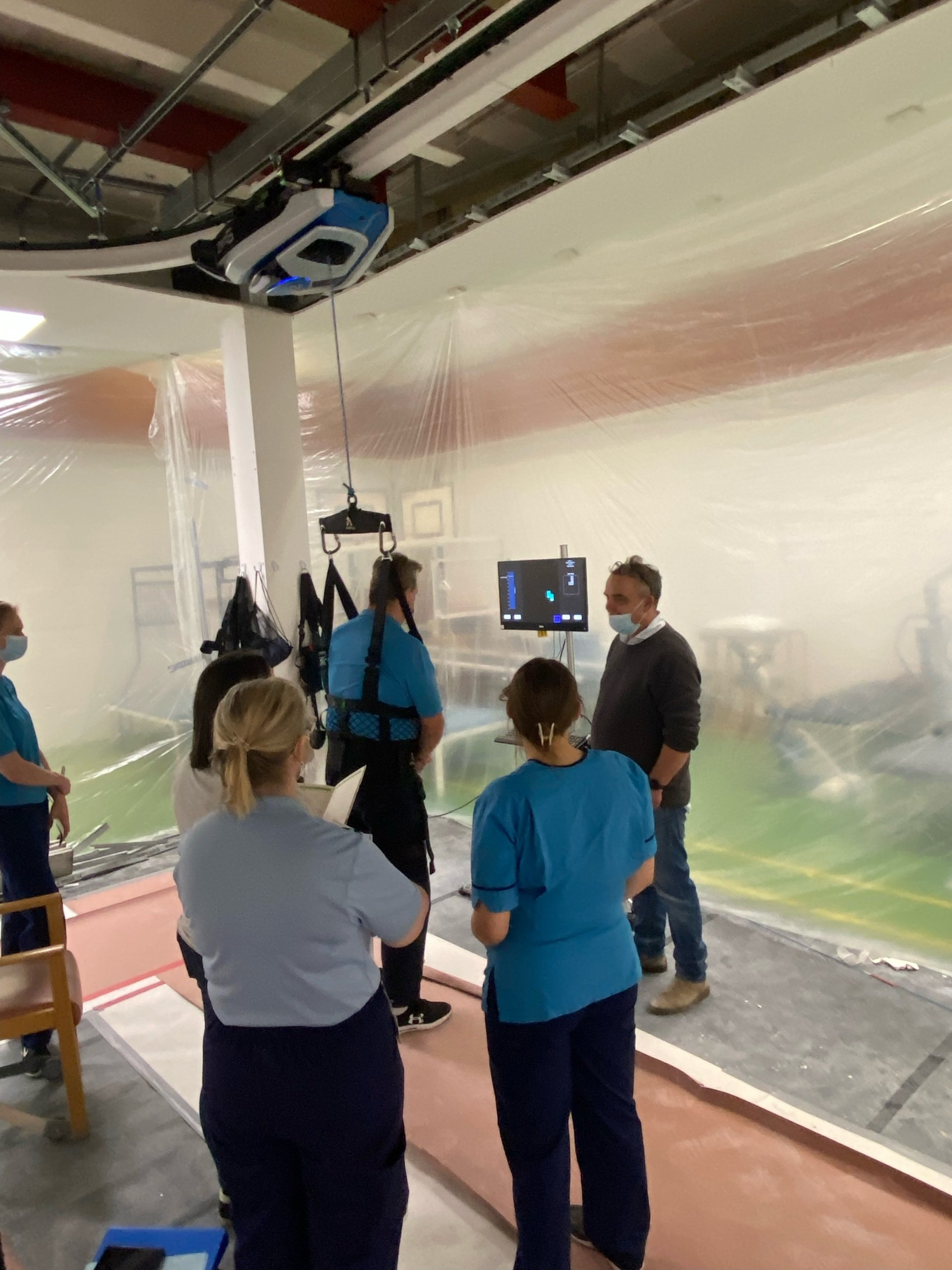
Ectron is delighted to share the first pictures of the installation process of the ZeroG Gait and Balance System by Aretech at the Queen Elizabeth National Spinal Injuries Centre in Glasgow.
The Queen Elizabeth National Spinal Injuries Unit is responsible for the acute and lifelong care of all adult patients in Scotland with traumatic and non-progressive spinal cord injury. The Unit was developed to provide specialised care for patients with spinal cord injury from throughout Scotland.
The modern care of spinal patients requires ready access to diagnostic and investigative techniques such as CT scan, MRI scan (including a research Siemens 7T MRI scanner) and neurophysiological assessments, together with on site availability of specialists in neurosurgery and neuroanaesthesia, orthopaedic surgery, general surgery and urological surgery.
The Queen Elizabeth University Hospital provides all essential services on campus and the National Spinal Injuries Unit is linked by corridor to the Institute of Neurological Sciences and the main hospital.
The ZeroG® Gait and Balance System protects patients from falls while providing dynamic body-weight support as patients practice walking, balance tasks, sit-to-stand and even stairs. ZeroG is mounted to an overhead track which means there are no barriers between the patient and therapist. With ZeroG, patients can begin rehabilitation in a safe, controlled environment.
ZeroG has advanced fall protection measures which monitor patient movements at 1,000 times per second. The intuitive touchscreen or wireless remote are used to operate the ZeroG. The motorised trolley automatically tracks patient movements up to 5 mph.
For more information about ZeroG please CLICK HERE or email: enquiries@ectron.co.uk
Share this post
More Recent News

